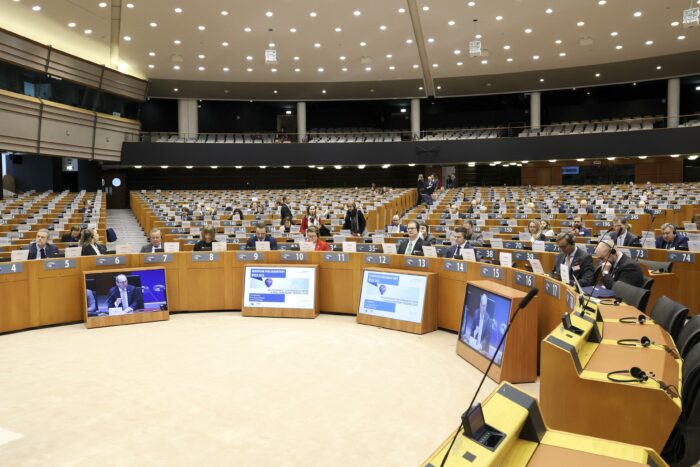The Progressive Post
The EU economic governance reform: technical and political points

The economic governance reform is very much a political issue. The EU Commission has brought forward a package for reforming the EU fiscal rules. Behind its technicalities, which may be difficult to navigate for the uninitiated, lie choices that are political by nature: what societal objectives to prioritise? Who takes the decisions? The proposals made here range from improving democratic legitimacy to incorporating green transition and reforms in the fiscal calculations. While seemingly rather technical, they would allow for a substantial rebalancing of policy priorities in the EU.
Among the technicalities which point to highly controversial political choices, five main areas stand out: enhancing democratic legitimacy, reducing the weight of debt sustainability analyses, incorporating reform effort in potential output projections, making the fiscal framework coherent with the green transformation, and, last but not least, preventing contractionary austerity. Let us take all these areas in which the Commission’s proposals for a new economic governance framework can be improved and – from a progressive perspective – should be improved.
Enhancing democratic legitimacy
The European Commission is proposing to define four-year net expenditure paths for countries based on debt sustainability analyses (DSAs). Based on the Commission’s input, countries should prepare medium-term fiscal-structural plans. If these plans use assumptions which differ from the Commission’s medium-term debt projection framework “they should explain and duly justify the differences in a transparent manner and based on sound economic arguments”. If the expenditure path included in the medium-term fiscal-structural plan is higher than the technical trajectory put forward by the Commission, “the member state shall provide in its plan sound and verifiable economic arguments explaining the difference.”
However, such an arrangement gives too much power to the Commission, basically allowing it to override the national governments’ decisions, and thus lacks democratic legitimacy. The logic should be reversed. For instance, member states should be deciding on the assumptions and methods used for the computation of their respective DSAs and expenditure paths. If there is a desire to standardise (parts of) the assumptions and methods, an intergovernmental working group similar to the Output Gaps Working Group (OGWG) should be in charge of defining these common standards. Transparency is also important, and all data, code and output files used for producing DSAs should be published, allowing for replication of the analyses. Also, national parliaments should have their due role, for instance, by signing off on the budgetary plans negotiated with the EU Commission. However, to make this more than a rubber stamp exercise, national parliaments require adequate analytical capacity. One way of ensuring this would be for national independent fiscal institutions (IFIs) to provide analytical support to Parliament as the Congressional Budget Office does in the US.
Reducing the weight of Debt Sustainability Analyses
The current proposal suggests that the Commission will set a technical trajectory for all countries with debt-to-GDP rate above 60 per cent (or a deficit exceeding 3 per cent of GDP). The technical trajectory is based on a DSA projecting debt 14 to 17 years into the future. Debt projections over a five-year time horizon are already fraught with very high uncertainty. Long-term debt projections become highly dependent on assumptions about the long-term state of the economy (which no one knows, especially not in times of rapid transformation). For example, if we expand the horizon of the Commission forecast for Italy to 17 years, as proposed in the reform package, the range of plausible outcomes for debt to GDP ratio falls within a range between 90 per cent and 190 per cent. This means that minor changes in assumptions will completely change the projections.
This is particularly worrisome as DSA projections may influence what is actually happening: if the Commission declares a country’s debt sustainable, investors are likely to buy its bonds, thus making debt sustainability a reality. If the Commission decides otherwise, this may set off a doom loop. Given their importance and the fact that there is no one unique correct set of assumptions, they should be agreed upon in a political process, ideally by the Council and the national parliaments (like the budget). A more fundamental solution would be to reduce the role of the DSA. Instead of defining the expenditure path for every country, one could use a DSA to calibrate a common benchmark for responsible fiscal policy. The primary balance could be this common benchmark.
Incorporating reform efforts in potential output projections
The use of DSAs does not eliminate the need for unobservable variables. On the contrary, DSAs do use real GDP growth projections based on potential growth, and net expenditure rules are specified in terms of net expenditure growth in relation to potential growth. The problem with current potential output calculations is that they heavily rely on past trends, notably about labour market performance. It does not consider reforms. If a government conducts a policy which contributes to the expansion of the labour market, its potential and hence fiscal space should expand accordingly. Growth-enhancing reforms should be included in the output assumptions. In particular, the assumption of a required minimum level of unemployment could be replaced with an empirically founded measure for full employment. Linking fiscal space to forward-looking reform potential would also incentivise investing and undertaking reforms.
Making the fiscal framework coherent with the green transformation
Currently, the baseline projection in the reform proposal does not incorporate emission reduction targets. Projections are largely based on the assumption of future economic developments as a continuation of the past. They incorporate NextGenEU but do not account for the rapidly tightening CO2-emissions constraint. In the absence of green investments, that constraint will clearly have a negative impact on the level of economic activity. One option here would be to ensure that public debt projections reflect national and European climate legislation. It should be spelt out clearly that investments and reforms are growth and fiscal sustainability enhancing, given the current climate legislation.
Preventing contractionary austerity
Reducing debt-to-GDP ratios is very challenging. Fiscal consolidations on average do not reduce debt-to-GDP ratios, partly because their negative impact on growth outweighs savings. Thus, for the new economic governance framework to align with the goal of reducing debt ratios, it should neither determine specific values for fiscal consolidation irrespective of the state of the economy, nor necessitate overly ambitious consolidations which end up having a counterproductive effect on the debt-to-GDP ratio.
If one is allowed to think out of the box, an idea could be that of replacing, for countries with excess deficits, the obligation to adjust their expenditure path by at least 0.5 per cent, with the obligation to meet three quantitative or qualitative targets agreed upon by the Council. Meeting these targets would be a precondition for the Commission and the Council to confirm effective action for correcting the excessive deficit has been undertaken. No obligation to reduce the debt-to-GDP ratio by a fixed amount independent of the state of the economy should be introduced.
Photo credits: European Union, 2023




